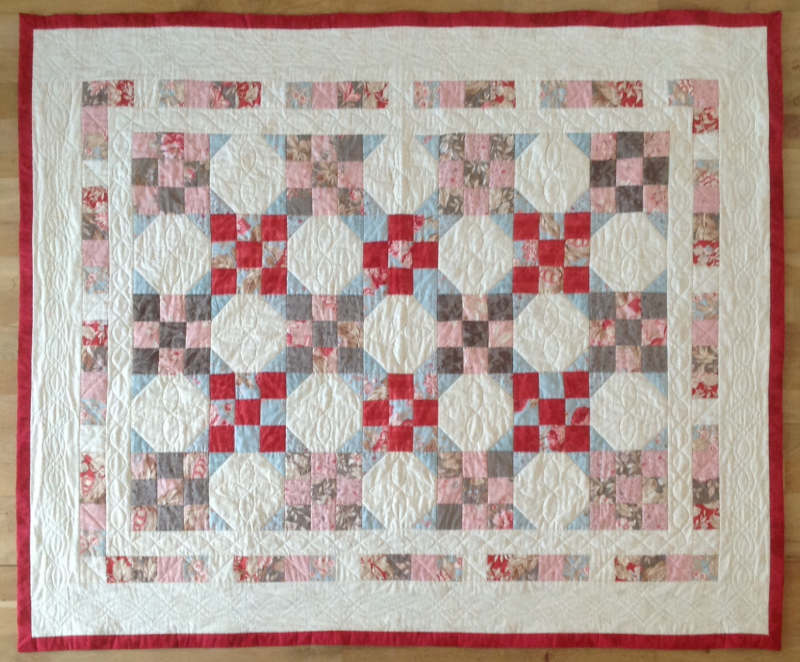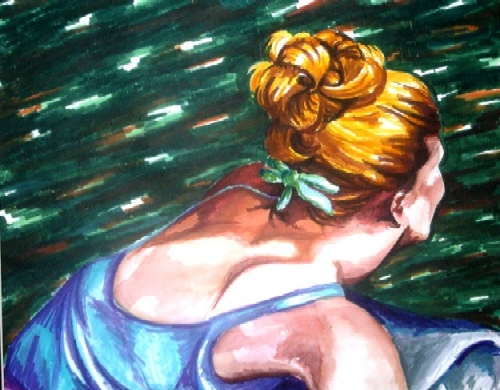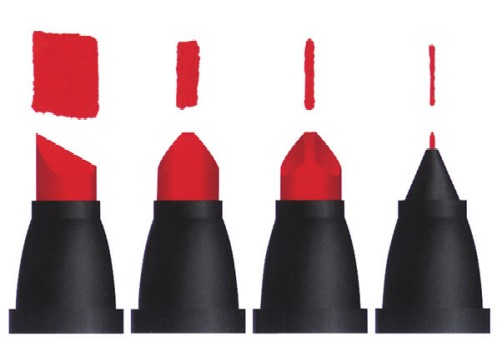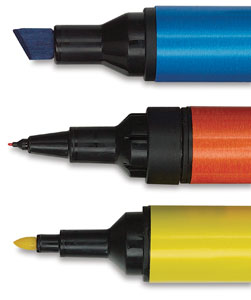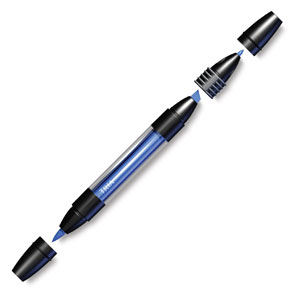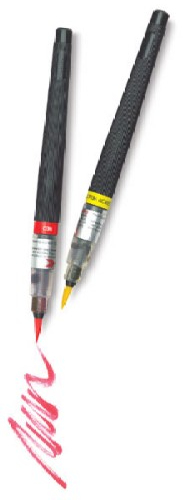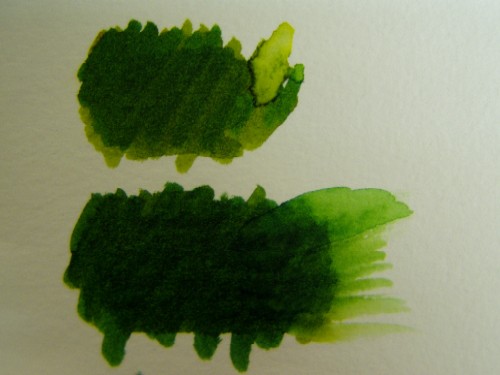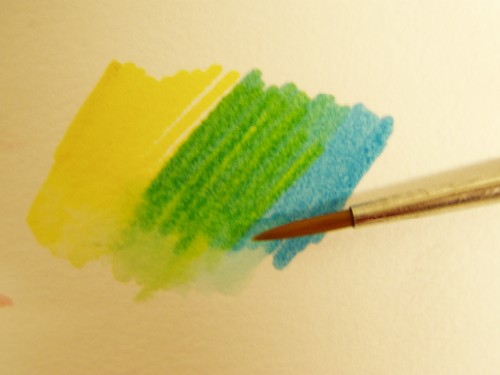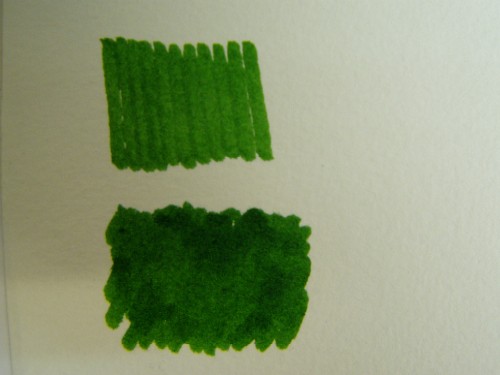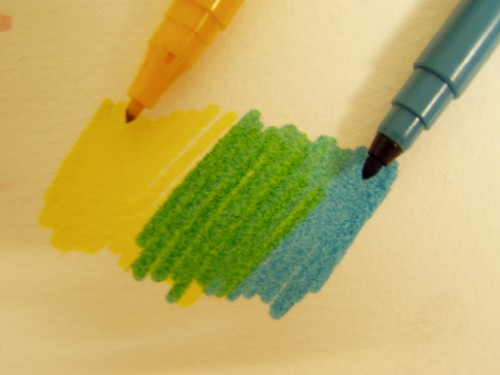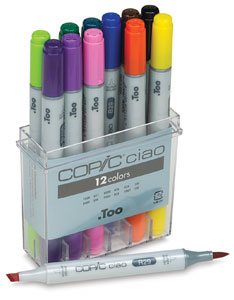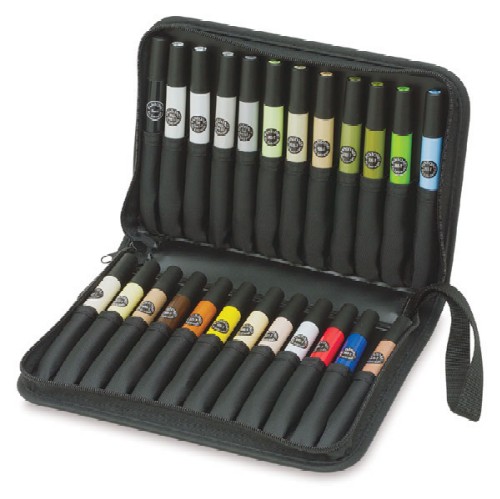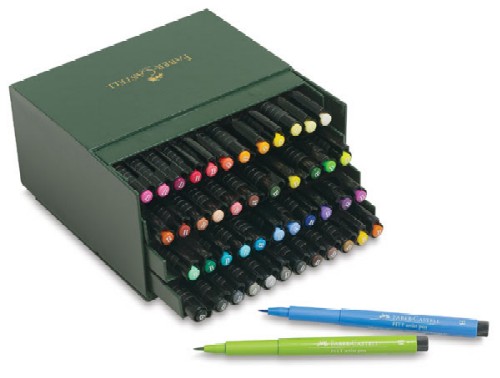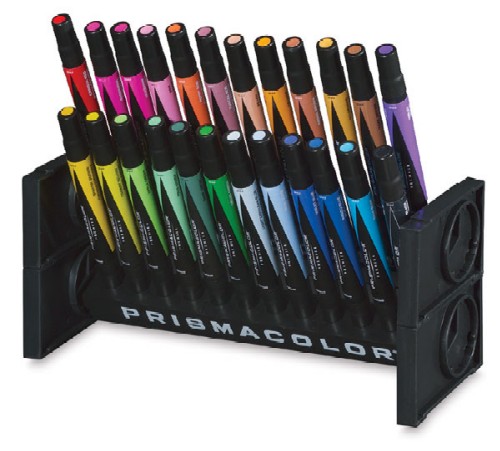|
Markers have undergone a huge development in design, both in terms of the holder itself and the tip. Many markers now have a different tip on both the front and back, and sometimes there are even 2 differently shaped tips overlapping each other. Here are some shapes including:
- a brush tip, like a small brush
- a chisel tip, as with highlighter markers
- a standard tip like with the old-fashioned pen
- an ultra-fine tip like with a fine liner.
|
In broad terms, markers can be divided into 2 categories:
- markers with water-based ink
- markers with waterproof ink.
Drawings made with water-based ink markers can be manipulated with a brush and water to blend or bleed the ink. This creates very unique effects.
|
Due to the different types of tips, you can create many special line effects with markers. You can also create flat fills, but generally, the individual lines remain visible within the fills.
|
Colors can be mixed by applying them on top of each other or hatching over each other. Be careful not to work too long in one spot with the marker. The moisture in the ink makes the paper vulnerable and can cause holes. Markers can be combined with other drawing techniques such as pencil or pen drawings.
|
Some well-known markers are:
- Copic Ciao markers
- Prismacolor four-in-one
- Faber-Castell Pitt artist Pens
- Tria System Pantone
|
|



